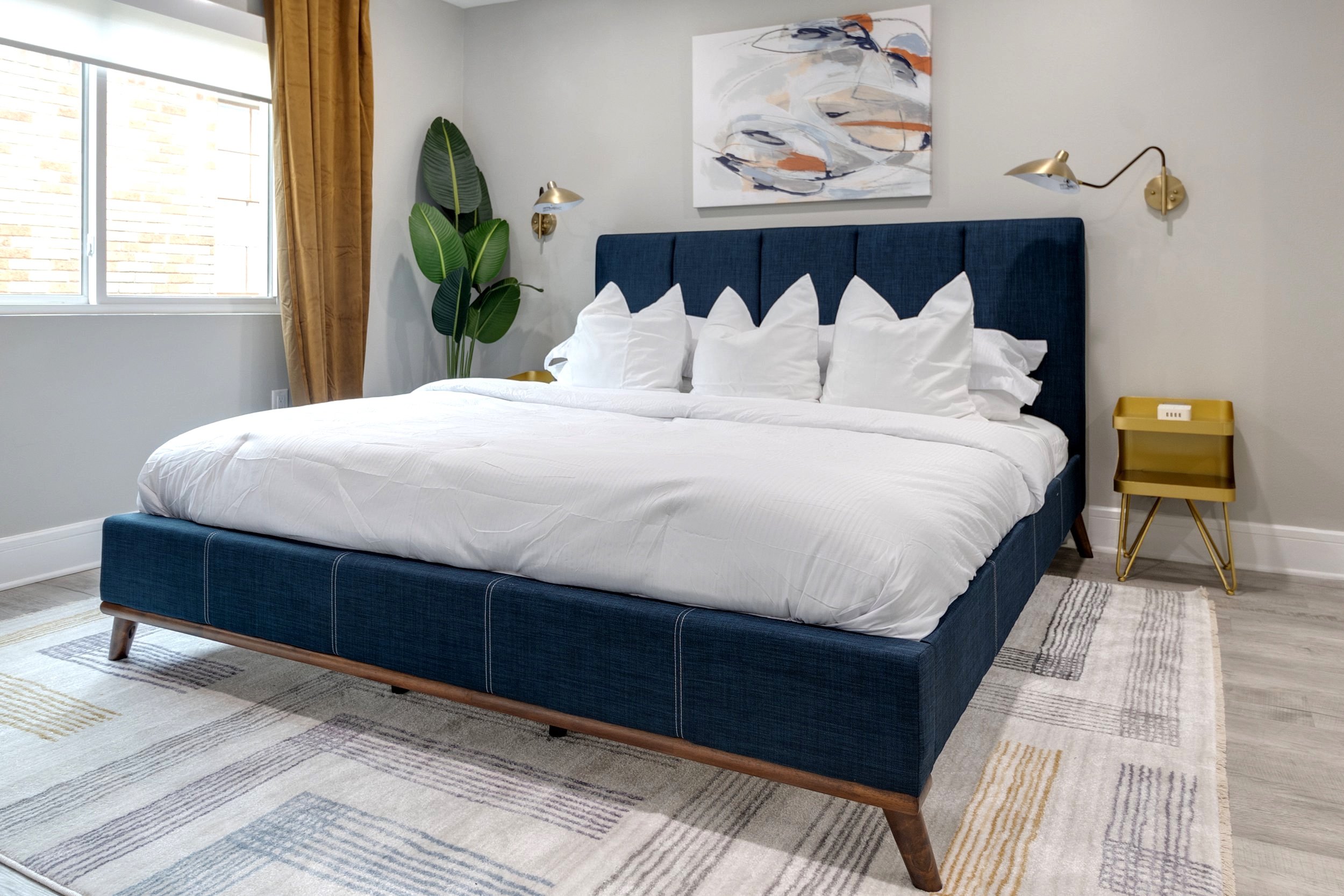So You Want to Support a Minority-Owned Interior Design Business—Here's How
In the vibrant tapestry of the design world, minority-owned interior design businesses bring a unique blend of sophistication, creativity, and a touch of poetic elegance. I love it when clients seek out the services of J’adore le Decor– not simply because it is a minority-owned business– but because they discern in my design ethos a “fingerprint” that strongly connects with theirs.
So what does genuine support for a minority-owned interior design business look like? Many would say that it looks the same for every other business out there. I beg to differ. And so In response to my personal experiences as a minority business owner in the interior design industry, I share a few insights that stem from real-world encounters. By the way, if you’re thinking that this post was written with only non-minorities in mind— keep reading.
“Change the way your home interacts with YOU– not the other way around”
As our lives advance we are naturally led toward more luxurious experiences— specifically within the realms of fashion, travel, art and yes, interior design. So I’m not surprised when many clients reveal that they’ve never worked with an interior designer before. This is especially true of (but not limited to) clients who reach out from historically marginalized communities. Regardless of a client’s origin, I relish the chance to share my passion, talent, and meticulous service to anyone stepping out of their comfort zone.
Some seek me out specifically because they desire to show minority support. It's important, then to be aware of actions that might unintentionally clip the wings of a worth-while endeavor in mid takeoff. Here are a few pointers.
1. Understand that Minority-Owned Interior Design Firms are Not Monolithic
We cater to a symphony of styles. Do you fancy traditional, minimal or vintage interiors? J’adore le Decor can weave a design story that suits your vibe. Do you love the intelligent use of color—even in small spaces? This is where my firm excels. Are you an art collector or one who relishes the idea of a customized piece? We also consult with scores of other professionals like architects, engineers and artisans to make sure we’re giving you the best we have to offer.
So if you want a home that is designed, and not one that is filled with items purchased to mimic repetitive images often shown on social media, we should talk. I solemnly swear not to turn your home into an army of ethnic masks—unless, of course, you specifically ask for that touch of eclectic charm. (wink). Nor will I create a shrine of bling. My team and I are so much more than that.
2. Don’t Assume We’re Going to Be the Cheapest Option
This one always tickles me. A potential client had my name on their list not only because they admired my style but also because, and I quote, "the other designers they contacted were just too expensive, and they just KNEW I would be different" Now… I couldn't help but wonder if there was some secret underground club of budget-friendly designers that I wasn't aware of, complete with a secret handshake and discount codes.
I imagined the potential client scrolling through their list like they're shopping for the latest deal on a discount website. "Designer A? Too pricey. Designer B? Out of budget. Ah, here's J'adore le Decor, let's see if they have a clearance section!"
It's amusing, really. I half-expected them to inquire if I offered a two-for-one deal on room projects or a bulk discount on color palette consultations. It's like they stumbled upon an imaginary creature called the "Budget-Friendly Minority Designer" and thought, "Jackpot!" While that might sound like a whimsical concept to some, rest assured, our pricing is competitive, reflecting the quality and value we bring to every project.
To be fair, comparing costs is a perfectly normal step to take in any purchasing process. But if the prospect of a low price is the only deciding factor in one’s search, automatically assuming that minority interior designers are the lowest priced option is a moral misstep.
3. The Somewhat Impossible Dream of Securing Funding
Unlike many other businesses, securing a grant or a loan to help fund an interior design firm is quite challenging, despite the fact that we have the same expenses and struggles as every other business type. I’ve only seen a handful of grant offerings for interior designers. Of course I applied for all of them. And to my surprise I was awarded one in the sum of $500. Was it helpful? You bet. Was it enough? I think you already know the answer to that one.
And securing a loan to start a luxury business to serve clients you don’t yet have, could lead to financial ruin for oneself and any of their dependents. Thus, many minority-owned interior design business owners accept jobs in singular increments while bootstrapping (using money from a side job) to support their operational expenses until the business levels out. It’s an incredibly tough balance, which makes this the perfect segway into the next point.
4. Did You Say You Wanted a Design Discount?
Running a business comes with SIGNIFICANT expenses. At the risk of being labeled “bougie” (even by my own kind) I have refused to discount my fees, which are already competitive and fair. Why? It's important for me to be mindful of the financial realities I face. Typically entrepreneurs follow a formula to divide up their earnings. Let me do a simple breakdown of how earnings are divided:
30% to taxes (paid quarterly)
20% is reinvested in the business to sustain it (software, attorney fees, licenses, insurance, employees, rent, marketing, office supplies, etc.)
50% is the owner’s salary
There may be some variation from business to business, but this breakdown is pretty standard. If the business generates 100K a year, applying the above breakdown means the owner’s take home pay is just $50,000. More often though, the owne'r’s salary is significantly reduced, because the business demands more cash.
Yes, it's tempting for clients to try to put their hands in our pockets by asking for discounted services-- or worse-- asking us to share with them any commission we earn from manufacturers whose products we recommend. Everyone wants a discount these days. But understanding the intricacies of business finances fosters a fair and respectful partnership.
5. Leave a Positive Review and Allow Us to Build Our Portfolio
Remember the days when your mathematics teacher encouraged you to "show your work"? That principle holds true for us designers too. In a world where proof of talent often speaks louder than words, positive reviews and building a portfolio become crucial steps. These are visual testaments to the excellence we bring to the table.
Here’s a real-life experience that shows proof of this: A couple of years ago, I a woman from Florida tracked me down after someone posted one of my designs in a private Facebook group. Fortunately, the image was watermarked with my business’ logo. When she finally found me she said: “I don’t care if your schedule is busy right now— I will wait. Let’s be clear: I want YOU.” That connection forged through a photograph has since become an enduring collaboration down to today.
Still, there exists a subtle yet impactful nuance that can sometimes be underestimated by clients—allowing us to capture our work through photography. I've encountered instances where clients initially agreed (in writing) to allow me to capture the essence of a finished project, only to later retract that agreement. That cut me to core, because as with all projects, I poured my soul into seeing that project to the end. While I was compensated for my efforts, the denial of the photography session, to be frank, hurt my business.
Why do people do it? Clients may withhold consent for reasons ranging from a desire to claim credit for the work themselves, to a reluctance to disclose that they sought external expertise, to concerns over privacy. Note: we make painstaking efforts to keep all our clients’ personal information confidential). Regardless of the motivation, allowing us to photograph and document our work is a fundamental aspect of our contractual partnership. It plays a crucial role in fortifying our portfolio and unveiling the depth of our creative prowess.
And what if an aspect of your project didn't meet expectations? Please grant us the opportunity to address and rectify the situation privately. Yes, I know that cancel culture is the rule of the day. But in the end it’s just messy. And it reflects poorly on EVERYONE involved. Instead of resorting to a court of public opinion, let’s engage in constructive dialogue to meet your satisfaction and resolve challenges with openness and professionalism.
6. Collaboration over Competition (for B2B Clients)
Did your client have an exceptional experience with J’adore le Decor? Know that it does not make us your competition. The client's satisfaction with our efforts becomes a shared victory. Let’s work together to do more of the same. Or even better, let’s establish a steady flow of repeat clients who feel honored by the services rendered through our collaboration.
There have been times when an artisan or builder pointed out how an idea I had could be made better. And likewise, I’ve helped skilled builders to see where a simple change could elevate their ciient’s experience with the finished product. This proves that when businesses work together, we possess the potential to elevate each other beyond the ordinary.
7. Timely Payments
The problem of late payments is as old as time. But the effect of such behavior on the business owner is often overlooked. One small business resource states: “63% of small business owners suffer from stress, anxiety or depression caused by late payments.”
“63% of small business owners suffer from stress, anxiety or depression caused by late payments.”
Timely payments are crucial for the sustainability of any small businesses. This is why J’adore le Decor works on a retainer basis which enables us to focus on delivering exceptional design without unnecessary financial stress. Of course we take care to give realistic estimates on expected design time to avoid surprises later.
8. Minority Interior Designers are Ready for Year-Round Collaboration
Nationally recognized occasions like Black History Month, or an unfortunate news event might momentarily thrust minority-owned businesses into the spotlight for support. But our passion for interior design is not seasonal. We're here year-round, ready to infuse creativity into spaces and share our expertise beyond event-driven attention.
We eagerly embrace the opportunity to forge connections with clients and businesses from all ethnic backgrounds. Our commitment extends beyond fleeting moments of attention to the prospect of long-term partnerships. This not only cultivates stability but also opens avenues for ongoing collaboration, ensuring shared success for everyone involved.
Reach out today, and together, let's craft spaces that tell unique stories, evoke emotions, and stand as testaments to the power of unity and design




